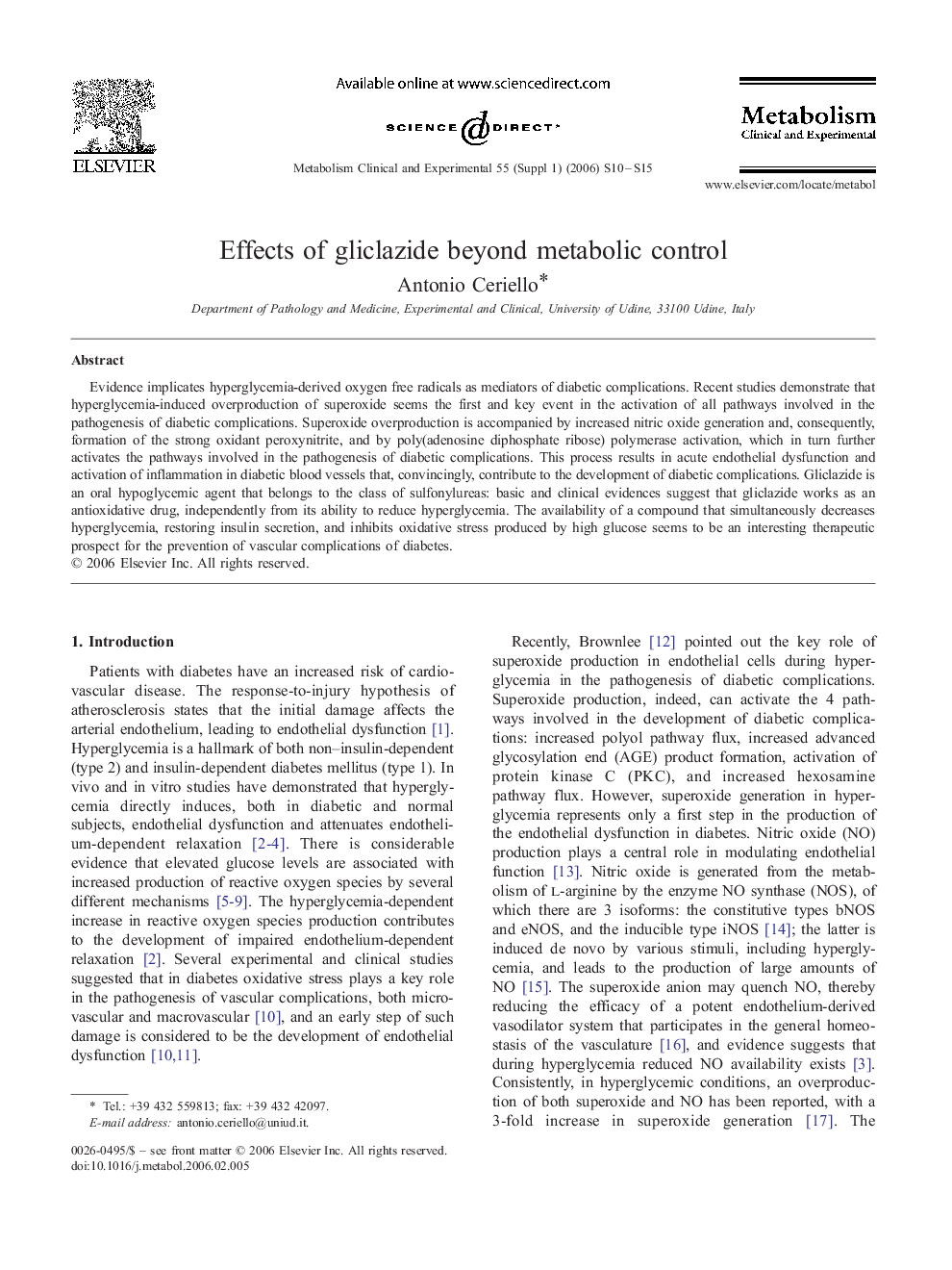| Article ID | Journal | Published Year | Pages | File Type |
|---|---|---|---|---|
| 2807376 | Metabolism | 2006 | 6 Pages |
Evidence implicates hyperglycemia-derived oxygen free radicals as mediators of diabetic complications. Recent studies demonstrate that hyperglycemia-induced overproduction of superoxide seems the first and key event in the activation of all pathways involved in the pathogenesis of diabetic complications. Superoxide overproduction is accompanied by increased nitric oxide generation and, consequently, formation of the strong oxidant peroxynitrite, and by poly(adenosine diphosphate ribose) polymerase activation, which in turn further activates the pathways involved in the pathogenesis of diabetic complications. This process results in acute endothelial dysfunction and activation of inflammation in diabetic blood vessels that, convincingly, contribute to the development of diabetic complications. Gliclazide is an oral hypoglycemic agent that belongs to the class of sulfonylureas: basic and clinical evidences suggest that gliclazide works as an antioxidative drug, independently from its ability to reduce hyperglycemia. The availability of a compound that simultaneously decreases hyperglycemia, restoring insulin secretion, and inhibits oxidative stress produced by high glucose seems to be an interesting therapeutic prospect for the prevention of vascular complications of diabetes.
